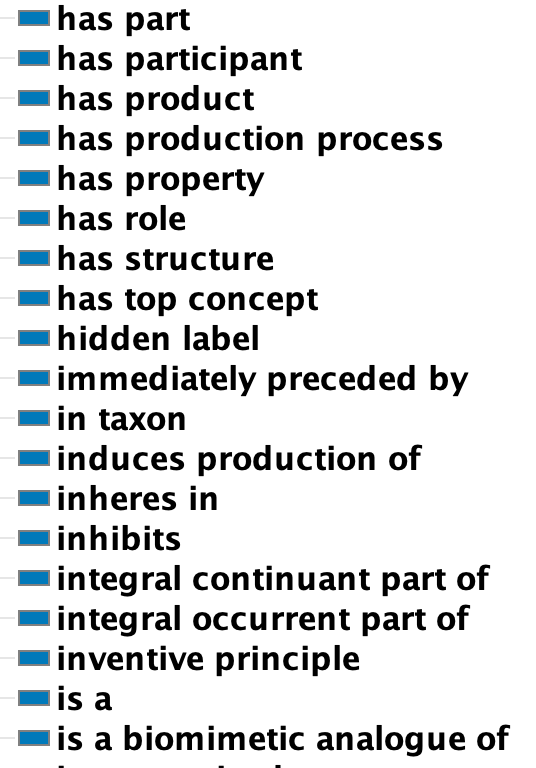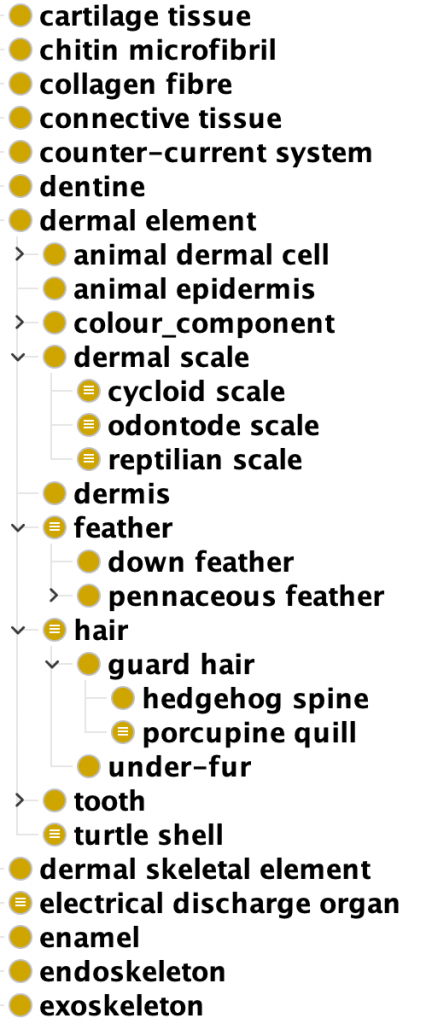At last . . . . very nearly there . . . .
An ontology collects a vocabulary and relates the words with properties such as those listed below:

The vocabulary becomes a structured catalogue of interrelated functions and objects. There is no limit to the amount or variety of things or concepts, real or imaginary, that can be included. Thus it becomes a repository of knowledge. It can be interrogated in various ways.
Here are some of the animal parts that are included.

There are similar lists of plant parts. They are cross-referenced with the Parameters and Inventive Principles. There are also lists of chemicals, structures and shapes, all interrelated by their properties. All of these can be added to and modified by the curators of the ontology. Many of the entries are linked to external databases such as Wikipedia. It’s possible to import from other ontologies.
